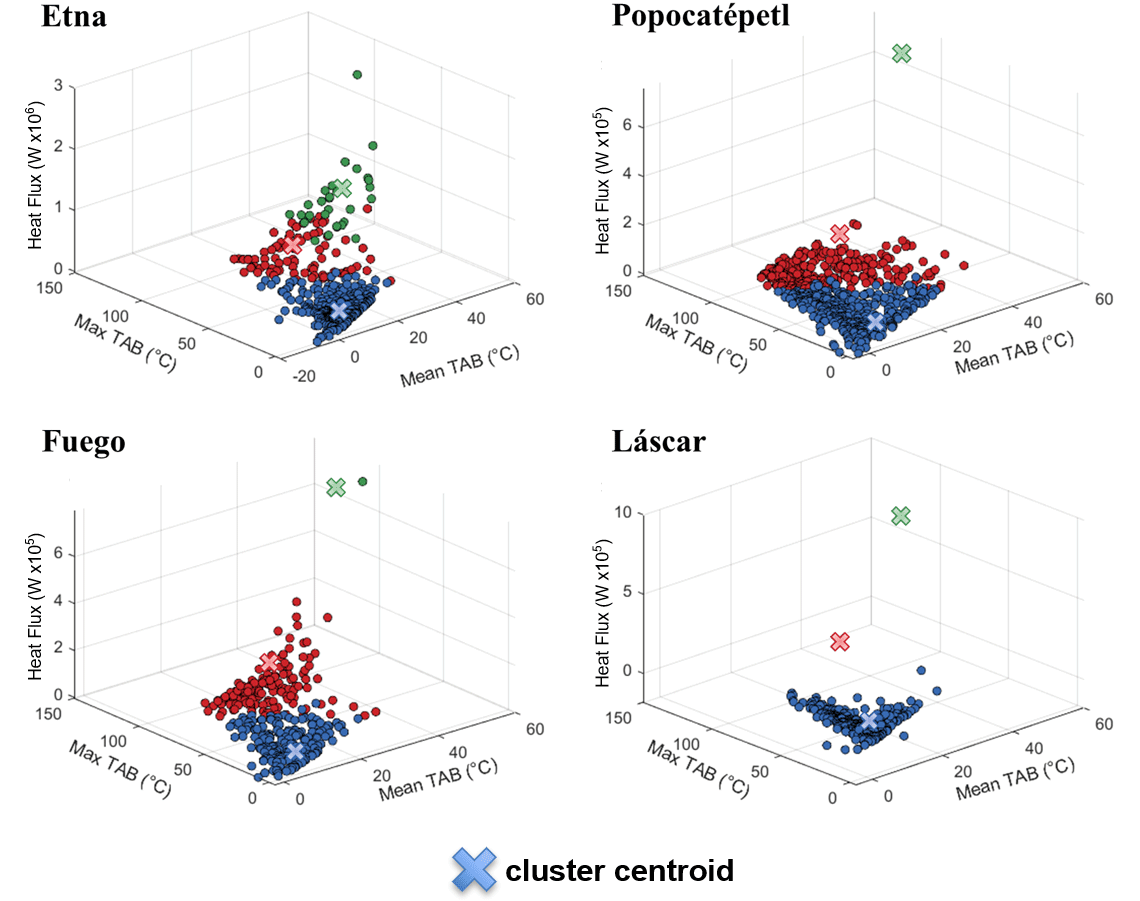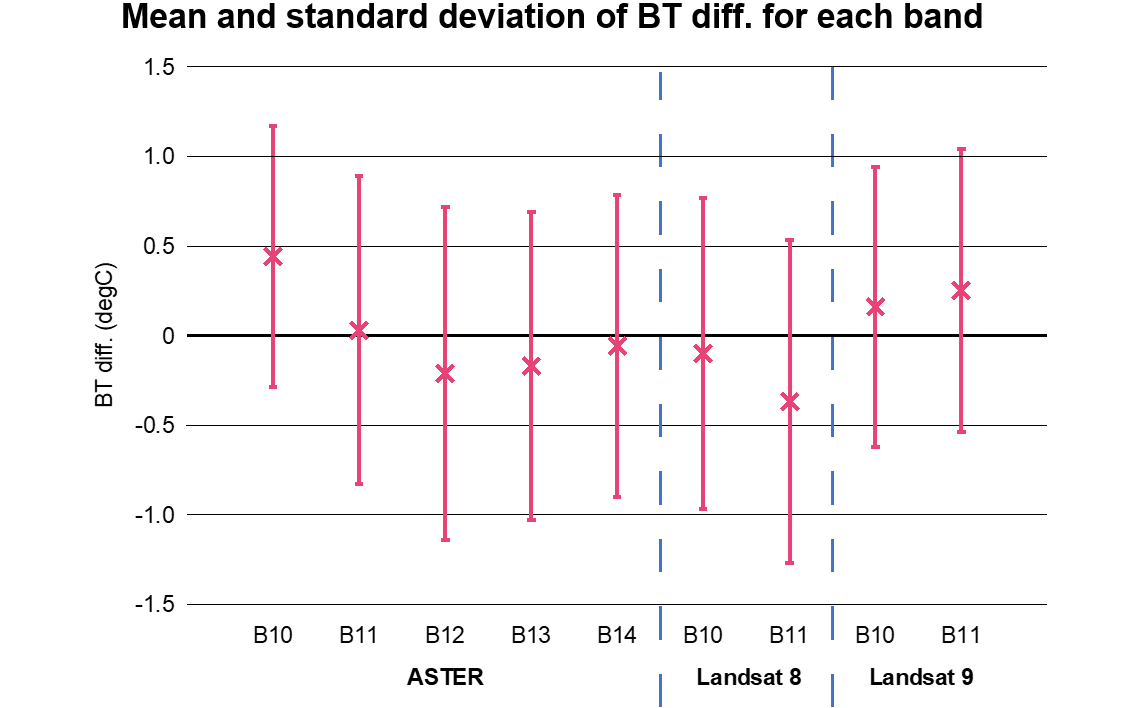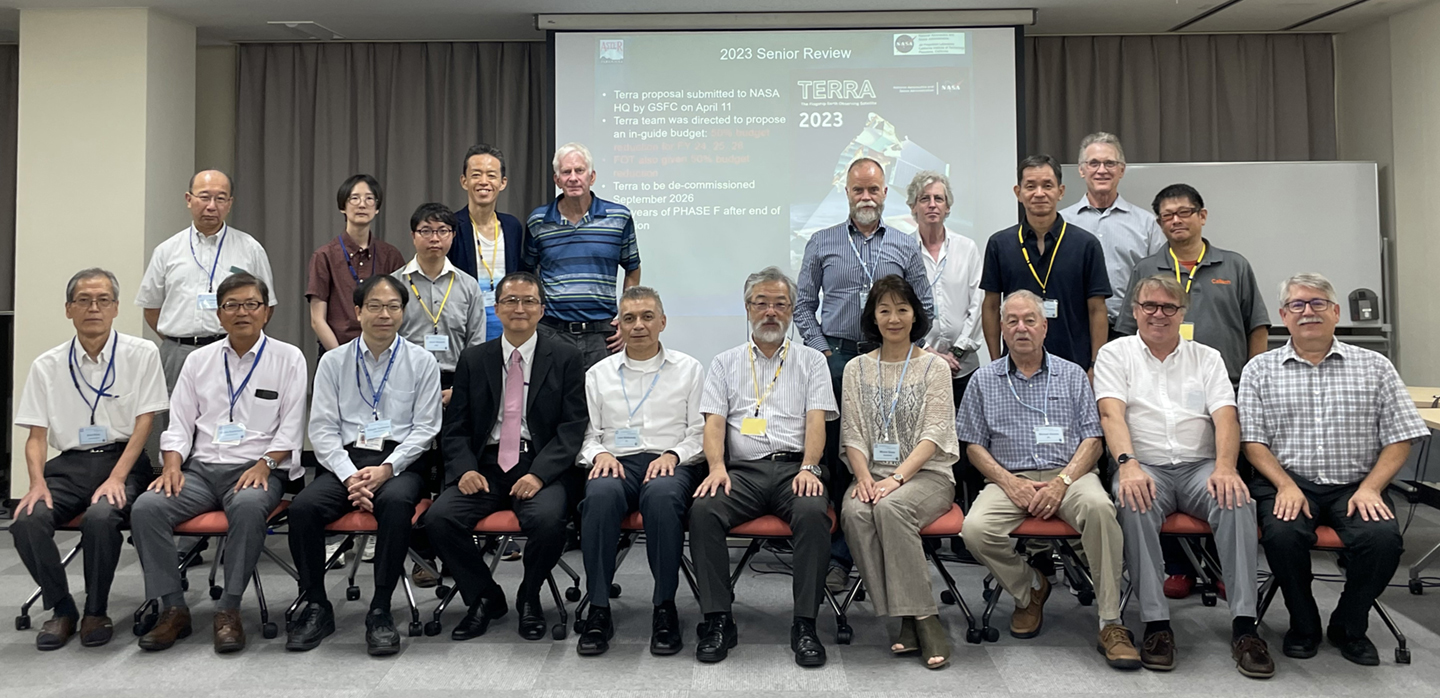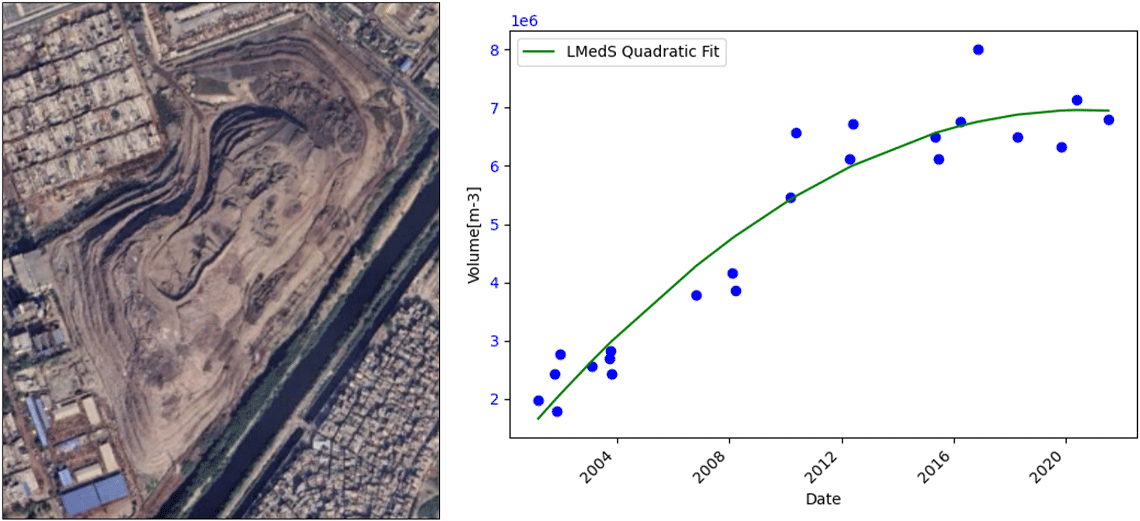Introduction
The Advanced Spaceborne Thermal Emission and Reflection Radiometer (ASTER) Science Team (ST) organized a three-day workshop that took place September 11–13, 2023, at the offices of Japan Space Systems (JSS) in Tokyo. Over 40 people from Japan and the U.S. participated in the in-person meeting—some of whom are shown in the Photo below. U.S. participants included members from NASA/Jet Propulsion Laboratory (JPL), NASA’s Land Processes Distributed Active Archive Center (LPDAAC), NASA’s Goddard Space Flight Center (GSFC), University of Arizona (UA), Grace Consulting (GC), and University of Pittsburgh (Pitt). Japanese members included representatives from JSS, Ibaraki University (IU), Nagoya University (NU), University of Tokyo (UT), Geologic Survey of Japan (GSJ), National Institute of Advanced Industrial Science and Technology (AIST), University of Tsukuba (UTs), and Remote Sensing Technology Center of Japan (RESTEC).
The meeting objectives focused on discussing impacts of the 50% budget reductions to the Terra mission (including ASTER) that have been proposed in the NASA Budget for Fiscal Years (FY) 2024–26; revised spacecraft management protocols by the Flight Operations Team; data acquisition status; data calibration and validation; data distribution; status of Level-1 processing interruption; applications; and end-of-mission plans. After summarizing the opening plenary presentations, the remainder of this article provides highlights from meetings of the various ASTER working groups and the closing plenary session.
Opening Plenary Session
Yasushi Yamaguchi [NU] and Michael Abrams [JPL—ASTER ST Leaders from Japan and the U.S., respectively] welcomed participants and reviewed the agenda for the opening plenary and the schedule for the week’s working groups.
Akira Tsuneto [AIST—Vice President], whose office is responsible for the ASTER project, presented a special welcome. As the former Director of Space Industry Office in the Japan Ministry of Economy, Trade and Industry (METI), he was responsible for making ASTER data free to all users.
Michael Abrams [JPL] presented Jason Hendrickson’s [GSFC] slides on the operations status of NASA’s Terra platform—which has changed significantly since the last meeting. The Earth Science Mission Operations (ESMO) Flight Operations Team began implementing “Lights Out Operation,” reducing staff from 24/7 coverage and eliminating the night shift. These changes resulted in a small increase in data gaps and delayed anomaly response. In early 2023 Terra lost two of its 24 solar array shunts. Full power capability remains—however, there is only one spare shunt remaining. Those issues notwithstanding, Terra remains healthy after more than 23 years of operation.
Chris Torbert [LPDAAC] presented ASTER product distribution statistics. The ASTER Global Digital Elevation Model (DEM) continues to be the most ordered product. Torbert discussed the ASTER Preservation Content Specification for the end-of-mission archiving. There is a NASA document that describes the desired content of this archive. As described by the ST at the last meeting, most ASTER data products will be created as real files and placed in a searchable and orderable archive, accessed through NASA’s Earthdata tool, where mission preservation documents for other instruments (e.g., HIRDLS, ICESat/GLAS, TOMS) can be found.
Michael Abrams [JPL] presented highlights of science results based on ASTER data—including the 2023 Earth Science Senior Review. Terra presented its report to NASA Headquarters, but as of this meeting, the response is still pending. However, as stated earlier, a three-year budget reduction of 50% is anticipated.
Hitomi Inada [JSS] presented the status of the ASTER instrument. Although many of the monitored components [e.g., visible-near-infrared (VNIR) pointing motor] have exceeded their original useful life in orbit, they show no signs of decreases in performance. All temperature and current telemetry trends remain straight lines.
Tetsushi Tachikawa [JSS] summarized the status of ASTER observations since the beginning of the mission. He reported that all of the global observation programs are functioning normally, acquiring data as planned. The change of the orbit repeat after the October 2022 constellation exit maneuver has been accommodated in the ASTER scheduler.
Simon Hook [JPL] described the status of the multispectral thermal infrared (TIR) instrument on the ECOsystem Spaceborne Thermal Radiometer Experiment on Space Station (ECOSTRESS) as well as NASA’s future Surface Biology and Geology (SBG) mission, which is part of the planned Earth System Observatory.
Applications Working Group
The applications session offered a sample of the variety of applications that make use of data from ASTER, see examples below. Miyuki Muto [IU] shared her work to estimate the volume of waste in 19 landfills in 11 countries through analysis of ASTER DEM data over the past 20 years. Analysis of data from a site in India showed that the volume of waste increased four-fold over 20 years—see Figure 1. All the other monitored sites showed similar large increases in waste volume.
Michael Ramsey [Pitt] discussed detecting volcanic eruption precursors using the entire ASTER TIR archive for six selected volcanoes: Etna, Fuego, Kliuchevskoi, Lascar, Vulcano, and Popocatepetl—four of these are shown in Figure 2. He and his students developed statistical methods to detect both low- and high-temperature anomalies. The team performed a cluster analysis on four volcanoes. By calculating and plotting heat flux versus mean temperature-above-background versus maximum temperature-above-background, clusters for eruption styles can be identified—see Figure 2. These results offer potential applicability to other volcanoes.

Calibration/Validation Working Group
This working group monitors the radiometric performance of ASTER’s VNIR and TIR instruments. The team performs calibration and validation of these instruments by analysis of onboard calibration lamps or blackbody, as well as measurements of pseudo-invariant ground targets during field campaigns. No changes in instrument performance were found based on validation activities during the past year. The radiometric calibration coefficients will remain unchanged for the foreseeable future.
Temperature–Emissivity Working Group
The Temperature–Emissivity Working Group focuses on ASTER’s kinetic temperature and emissivity (T–E) products and their applications, including monitoring instrument performance and calibration. They also review the status of the nighttime TIR global map program. In situ measurement campaigns in Japan and the U.S. use lakes and dry lake beds for ground-based calibration campaigns. Recent campaign results indicate that the TIR instrument perform within required calibration limits—see Figure 3. The team also noted the successful completion of the Visible Infrared Imaging Radiometer Suite (VIIRS)–ASTER 375-m (~1230-ft) near-real-time land-surface temperature algorithm using ASTER emissivity for corrections. Review of the thermal global mapping acquisition program indicated that it was proceeding as planned with no changes needed.

Operations and Mission Planning Working Group
The Operations and Mission Planning working group oversees and reviews the acquisition programs executed by the ASTER scheduler. The working group schedules ASTER data acquisitions daily to accommodate ASTER’s average 8% duty cycle. An automated program selects 600–700 daily scenes from the more than 3000 in the request archive.
Tetsushi Tachikawa [JSS] reviewed the status of acquisition scheduling. Urgent observations receive the highest priority and can be scheduled close to acquisition time. Approximately 70 scenes are programmed per month—with over 95% acquisition success. By contrast, global mapping data acquisitions receive the lowest priority and fill in the scenes for the daily quota. The objective is for ASTER to acquire at least one cloud-free image for every place on Earth. Due to persistent cloud cover, success is typically ~85%. The group restarts the program after several years, with the next scheduled restart in October 2024. The thermal group submits aerial requirements to acquire global nighttime coverage with the thermal bands, which will continue as scheduled. There are also acquisition programs that focus on islands, volcanoes, glaciers, and cloudy areas. The global volcano image acquisition program will continue with no change to the observation parameters. Acquisition of images of islands and over cloudy areas will also continue in current form. The global glacier acquisition program will be modified to change the VNIR gain settings to optimize images over snow and ice.
Chris Torbert [LPDAAC] reported that software fixes were ongoing for the (currently non-functional) expedited data processing at the LPDAAC.
Closing Plenary Session
Each working group chairperson summarized the presentations, discussions, and recommendations that occurred during each session. Consensus holds the ASTER instrument is operating normally, with no indications of any component failures. The backlog of unprocessed scenes resulting from the 2022 constellation exit maneuver impact on production software should clear by early October 2023. The closing highlighted the impact of the 50% budget reduction on the Flight Operation Team at GSFC with only a small increase in lost data (1–2%) due to the absence of operators to attempt immediate recovery.
Conclusion
The fifty-second ASTER ST Meeting successfully covered all of the critical issues introduced during the opening plenary session. Working groups updated instrument scheduling, instrument performance, archiving plans, and new applications. The plan is for the 2024 meeting to take place at the same venue in Tokyo.
Michael Abrams
NASA/Jet Propulsion Laboratory/California Institute of Technology
mjabrams@jpl.nasa.gov
Yasushi Yamaguchi
Nagoya University/Japan Science and Technology Agency
yasushi@nagoya-u.jp


































